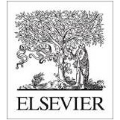Physics-based simulation of mesh based domains remains a challenging task. State-of-the-art techniques can produce realistic results but require expert knowledge. A major bottleneck in many approaches is the step of integrating a potential energy in order to compute velocities or displacements. Recently, learning based method for physics-based simulation have sparked interest with graph based approaches being a promising research direction. One of the challenges for these methods is to generate models that are mesh independent and generalize to different material properties. Moreover, the model should also be able to react to unforeseen external forces like ubiquitous collisions. Our contribution is based on a simple observation: evaluating forces is computationally relatively cheap for traditional simulation methods and can be computed in parallel in contrast to their integration. If we learn how a system reacts to forces in general, irrespective of their origin, we can learn an integrator that can predict state changes due to the total forces with high generalization power. We effectively factor out the physical model behind resulting forces by relying on an opaque force module. We demonstrate that this idea leads to a learnable module that can be trained on basic internal forces of small mesh patches and generalizes to different mesh typologies, resolutions, material parameters and unseen forces like collisions at inference time. Our proposed paradigm is general and can be used to model a variety of physical phenomena. We focus our exposition on the detail enhancement of coarse clothing geometry which has many applications including computer games, virtual reality and virtual try-on.
翻译:以物理为基础的网状域模拟仍是一项具有挑战性的任务。 最先进的游戏技术可以产生现实的结果,但需要专家知识。 许多方法中的一个主要瓶颈是整合潜在能量以计算速度或迁移的一步。 最近, 以物理为基础的模拟学习方法引起了人们的兴趣, 以图表为基础的模拟方法为前景良好的研究方向。 这些方法的难题之一是生成模型, 这些模型独立地和概括不同物质特性。 此外, 该模型还应该能够对无法预见的外部力量( 如普遍存在的虚拟碰撞)作出反应。 我们的贡献基于一个简单的观察: 评估各种力量对于传统的模拟方法而言,其计算成本相对较低,并且可以与其整合平行地进行计算。 如果我们学会一个系统如何对一般力量作出反应,而不论其来源如何,我们可以学习一个能够预测由于总体力量而导致的状态变化的模型。 我们通过一个不透明的力量模块,将由此形成的力量的物理模型有效地从后面推算出来。 我们的这一理念基于一个可以学习的模块, 可以用来对传统模拟方法的应用进行计算, 并且可以与这些力量的精确度进行比喻, 我们的模型可以用来在普通的模型中, 我们的模型中可以用来分析, 和一般的精确的精确的精确的模型, 。 我们的模型可以用来用来分析。



